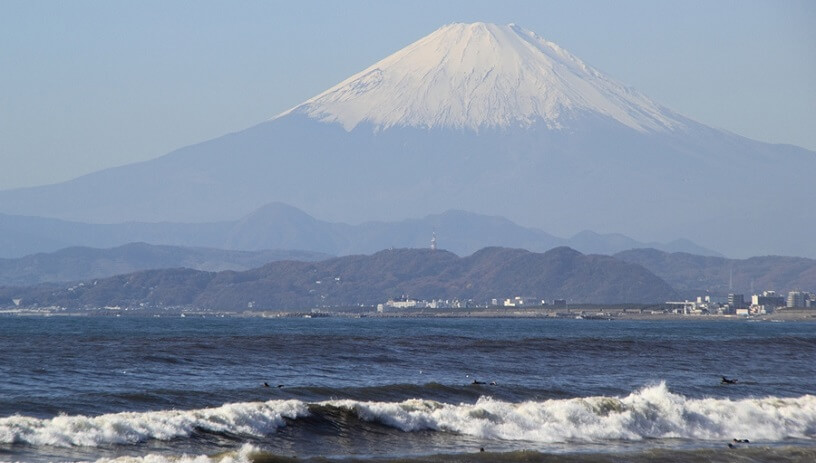World-Class Hiking in Japan

When you think about Japan, hiking probably isn’t the first activity to come to mind. With so many cultural experiences in the big cities and iconic spots to see, it’s hard to make time for hiking. But trust us, it’s actually really great. In fact, it’s more than great – it is one of the hiking world’s best-kept secrets.
Try traversing the 'Big Snow Mountain’ of Hokkaidō, climbing volcanoes in Kyūshū, or strolling through the hills around Kyoto. Wherever you go, you’ll have company on the trails as the Japanese are in on the secret and are avid hikers.
Daisetsuzan National Park (Hokkaidō)
Daisetsuzan National Park has incredible hiking. After all, its name translates to ‘Big Snow Mountain’ and for a majority of the year, this park and it’s star attraction, Hokkaidō, lives up to expectations. While snow may be a big draw, even in warm months, the hiking is fantastic. Daisetsuzan or ‘Big Snow Mountain’ is Japan’s largest national park, and it covers an astounding 2,300 sq km.
With landscapes that include soaring mountains, active volcanoes, remote onsen, clear lakes and dense forests, Daisetsuzan is the stuff of daydreams. To this day the park and its land remains virtually untouched by development and the park has minimal tourism. In fact, most of the visitors don’t stay in the park but prefer to stay in the hot-spring villages on the periphery. If you choose to follow suit, you can make small forays into the park’s interior and hike through valleys on challenging day routes, and then return to your onsen hotel to unwind.
Kamikōchi (Nagano-ken)
Kamikōchi is an alpine sanctuary in the heart of the Japan Alps and is home to some of Japan’s most beautiful scenery. This spectacular scenery can be seen along the rushing Azusa-gawa. There are a number of hiking trails from which to see and enjoy it. In the late 19th century, foreigners ‘discovered’ this mountainous region and coined the term ‘Japan Alps’. A British missionary, Reverend Walter Weston, travelled from peak to peak and started a movement in Japan where mountaineering became a sport, and a popular one at that. Reverend Weston is now honoured with a festival (on the first Sunday in June, the official opening of the hiking season), and Kamikōchi has become a base for strollers, hikers and climbers. Regardless of your experience with hiking there will be a trail that meets your activity level.
Fuji-san (Shizuoka-ken)
Mount Fuji — even the name conjures images of the majestic peak towering over the horizon. After all, what kind of serious climber would come to Japan and not at least TRY to bag the highest peak in the country? Visit Fuji-san in July or August for the best times to try and climb Mount Fuji. Standing a full 3,776 m, Mount Fuji is Japan’s highest and most famous peak, and is this region’s natural draw.
In addition to actually climbing Fuji-san, visitors can hunt for precious views of the sacred volcano from around the Fuji Go-ko (Fuji Five Lakes). Try visiting in the winter and spring months for the best bet to spot Fuji. Keep in mind though, even during these times the snow-capped peak may only be visible in the morning before the cloud curtain descends. This luck-of-the-draw aspect of the hunt is of course part of the appeal of visiting Fuji-san.
Yakushima (Kagoshima-ken)
Designated a Unesco World Heritage Site in 1993, this island is home to the ancient Jōmon Sugi tree and mountainous hiking. While hiking this area, you’ll see (and climb!) the craggy mountain peaks of the islands interior. Here, the world-famous yaku-sugi trees grow. They are ancient cedar trees that are said to have been the inspiration for some of the scenes in Miyazaki Hayao’s animation classic “Princess Mononoke”.
Mossy forests and high peaks are the main draws of the area, but that doesn’t mean you should discount the excellent coastal onsen and the island’s few sandy beaches. Keep in mind that Yakushima is a place of extremes: the mountains wring every last drop of moisture from the passing clouds and the interior of the island is one of the wettest places in Japan. Whatever you do, come prepared and don’t set off on a hike without a good map and the proper gear — layers are key. Protect yourself on this hike with an adventure sports travel insurance plan where you’ll have access to 24/7 emergency assistance, in case of an unexpected occurrence.
Get to know the beautiful, varied, challenging and intense landscapes that make up Japan’s four most popular hiking regions. Prepare your gear before you leave, focus on having plenty of layers, sunscreen and a water bottle and get ready for the hike of a lifetime. Determine your preferred level of activity, take stock of the options available and start planning the perfect hiking trip through Japan.
Image courtesy of Flickr user tonko43.